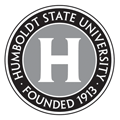Home > Journals > HJSR > No. 41 (2019)
Humboldt Journal of Social Relations
Abstract
The beach and coastal sand dunes comprise a dynamic and fragile ecosystem that provides a bounty of ecological services. These lands provide protection from coastal erosion and sea level rise, and are home to a rich biodiversity of plant and animal species in addition to their recreational value. The Humboldt Coastal Nature Center and the surrounding coastal dunes (HCNC) are man-aged as a land trust by Friends of the Dunes (FOD). FOD prioritize the restoration of dune habitats and encourages public involvement through community supported education and stewardship programs, guided nature tours, and naturalist training programs. The faculty, students, and staff of Humboldt State University regularly collaborate with FOD for research and volunteer programs. For example, mapping of the coastal dune habitats was performed in 2016, 2017 and 2018 by students from the intermediate remote sensing class and produced results addressing research gaps on social trails, dune movement, sea level rise, and invasive species distribution. This paper examines the natural and anthropocentric changes to the dune habitat from a geospatial perspective and identifies the social values of visitors to the dunes using HCNC visitor records. A small Unmanned Aerial Vehicle (sUAV) was used to acquire high-resolution imagery and then an orthomosaic image with 14 cm spatial resolution was created using the Structure from Motion (SfM) technique within the software Agisoft PhotoScan. sUAV imagery and existing maps were used to digitize social trails and distinguish them from official trails. Coastline change and dune movement were determined us-ing UAV imagery, NAIP satellite imagery, and lidar data. Visitor records of the HCNC were analysed using word clouds and line charts. The results showed that many of the social trails emerged from the neighborhoods southeast of the FOD land trust. As an observation, some directional signs for public access trails pointed out from the trail and may have caused confusion to visitors and mis-guided them into creating social trails. The social trails have disturbed nesting colonies of bees and led to trampling of dune mat habitats and rare plant communities. A word cloud created from visitor logs depicted that visitors had wonderful experiences at the coastal dunes and beach and highly support the conservation efforts underway. In conclusion, we believe these findings can be used as baseline information to help inform management techniques in order to better fit the region of interest and support the mission of the Friends of the Dunes land trust.
Recommended Citation
Madurapperuma, Buddhika,
Jess Barger,
Melissa Collin,
Christine Emerson,
Sean Fleming,
and
Brian Murphy.
2019.
"A Geospatial Recipe for Identifying Social Values and Fragmentation Issues of the Friends of the Dunes Land Trust."
Humboldt Journal of Social Relations
1
(41):
8-21.
DOI: https://doi.org/10.55671/0160-4341.1089
Included in
Biological and Physical Anthropology Commons, Environmental Studies Commons, Geographic Information Sciences Commons, Nature and Society Relations Commons, Remote Sensing Commons


